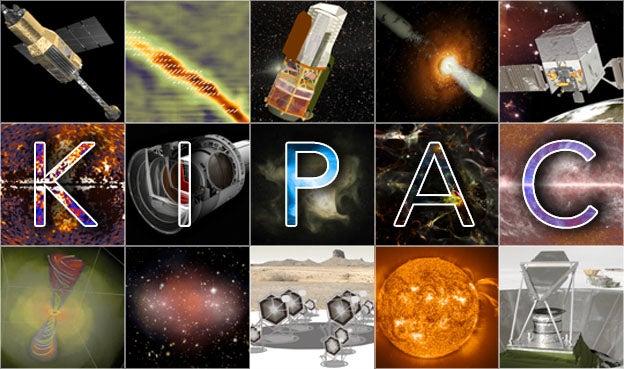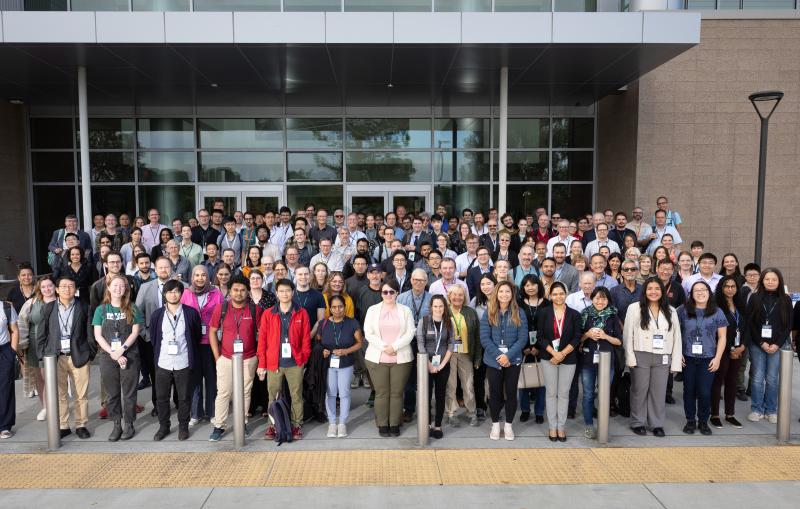The Seven Biggest Questions in Particle Astrophysics and Cosmology
SLAC's Kavli Institute for Particle Astrophysics and Cosmology (KIPAC) recently hosted many of the top scientists in the field to discuss the most important questions to confront in the coming decade.
By Andy Freeberg
The cosmic frontier. This is the name physicists give the ambitious questions they are trying to answer through observations of outer space. These questions aren't only in the interest of astronomy; in fact, they're promising paths to understanding the fundamental physics of our world.
To celebrate the 10th anniversary of the Kavli Institute for Particle Astrophysics and Cosmology (KIPAC), SLAC recently hosted many of the top scientists in the field to discuss the most important mysteries to confront in the coming decade.
Where Did That Come From? Cosmic Rays and Intergalactic Particle Accelerators
After a century of study, researchers still struggle to understand the origin of cosmic rays, particles with unearthly, extreme energies that fill the universe and bombard our planet from all directions. Scientists believe these high-energy oddities play a key role influencing the physics and chemistry that form stars and planets, and even influence life on Earth by occasionally causing mutations in DNA.
And yet, the exact ways in which cosmic rays are accelerated remains a major open question. We've discovered where many come from within our galaxy, but the most extreme cosmic rays continue to confound us.
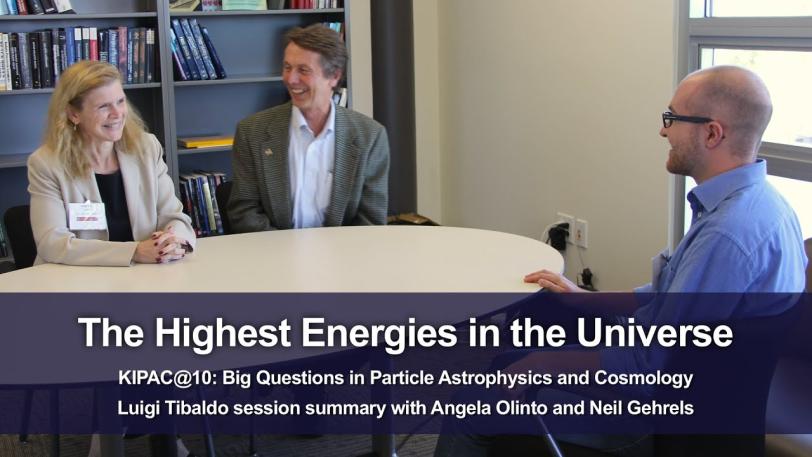
KIPAC@10: The Highest Energies in the Universe
What is the Dark Matter?
Given our standard theory of gravity, observations tell us there must be a lot more mass holding things like our Milky Way galaxy together than we can see. Scientists' suspicion is that this missing mass is composed of a new kind of “dark matter,” a material with one or more particles that should be detectable by experiments.
This is a particularly exciting time for dark matter study because there are some intriguing clues pointing to where dark matter particles might be hiding. These clues are helping researchers develop a variety of searches. The three major strategies are direct detection, collider production and indirect detection.
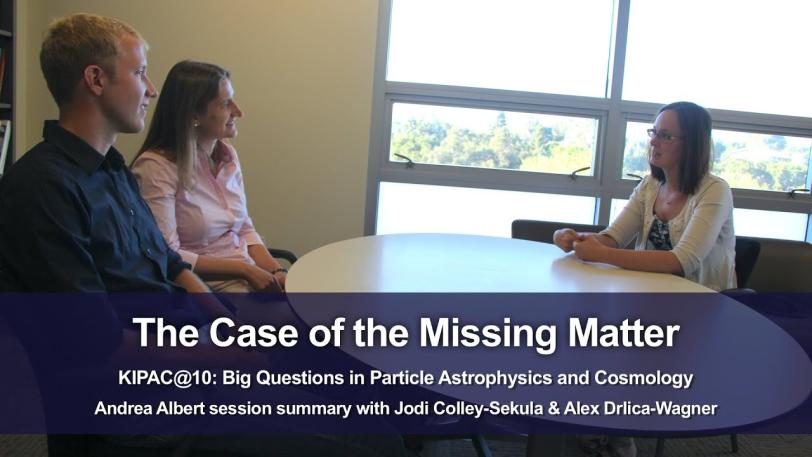
KIPAC@10: The Case of the Missing Matter
What Can Compact Objects Teach Us? Black Holes and Neutron Stars, Extreme Physics in Small Packages
Enormously powerful gravitational fields that warp the local fabric of space and time. Incomparably strong magnetic fields that can stretch atoms themselves into long spindles. Materials so dense a teaspoonful would weigh billions of tons. These are just some of the exotic properties of compact objects, a catch-all term for several types of unbelievably dense and remarkable objects—white dwarfs, neutron stars and black holes.
Compact objects are known to possess some of the most extreme physical properties ever observed. Scattered throughout our galaxy and beyond, these objects serve as astrophysical laboratories that test the very limits of physics as we know it.
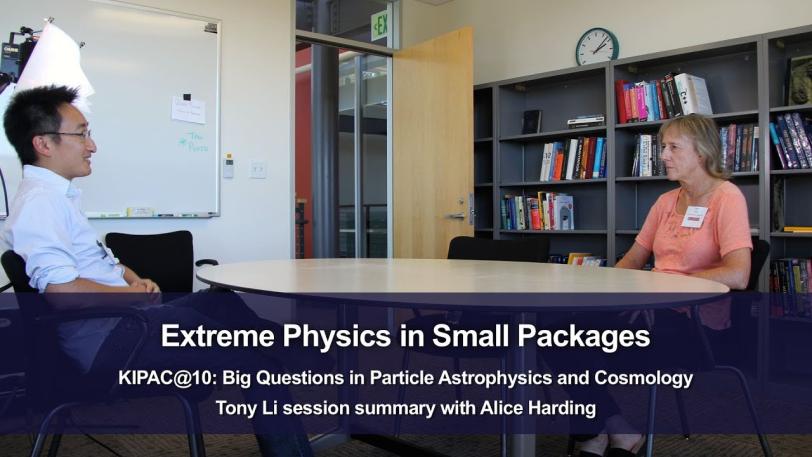
KIPAC@10: Extreme Physics in Small Packages
How Did This All Happen? Galaxy Formation and Evolution
Over millions and millions of years galaxies form, grow and change. Gas accumulates, stars are born in some regions and voids fill others. To understand these processes, astrophysicists study snapshots from telescopes and try to piece them together with complex computer simulations.
New observations are shedding fresh light on galaxies – from the earliest to form, to how galaxies start and stop creating stars, to the physics of galaxy clusters, the most massive objects in the universe. And while a general picture of galaxy formation and evolution is in place, there are still huge gaps in understanding how and why it all happens.
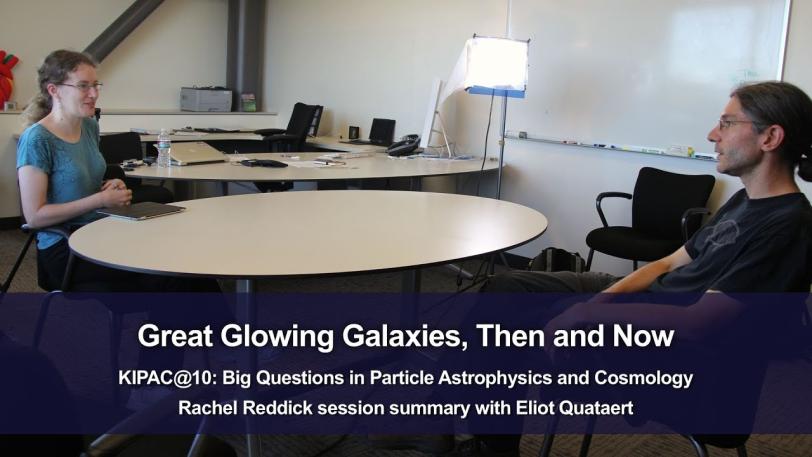
KIPAC@10: Great Glowing Galaxies, Then and Now
How Will We Make Sense of It All? Astronomically Big Data
Astrophysics and cosmology deal with big everything: big datasets, big simulations and big collaborations. Researchers already have information on billions of astronomical objects, and expect to make measurements of many billions more in the next decade.
Yet the challenge with such a large dataset is not so much in handling its size, but in its complexity. The struggle in trying to find a single rare star in a haystack of billions of near-identical stars, or understanding the relationships between every single galaxy in the universe, goes beyond simply the enormous number of gigabytes. As more and more data piles up, the teams who are most clever about analyzing and combining those datasets will be the ones who will likely make the biggest discoveries.
